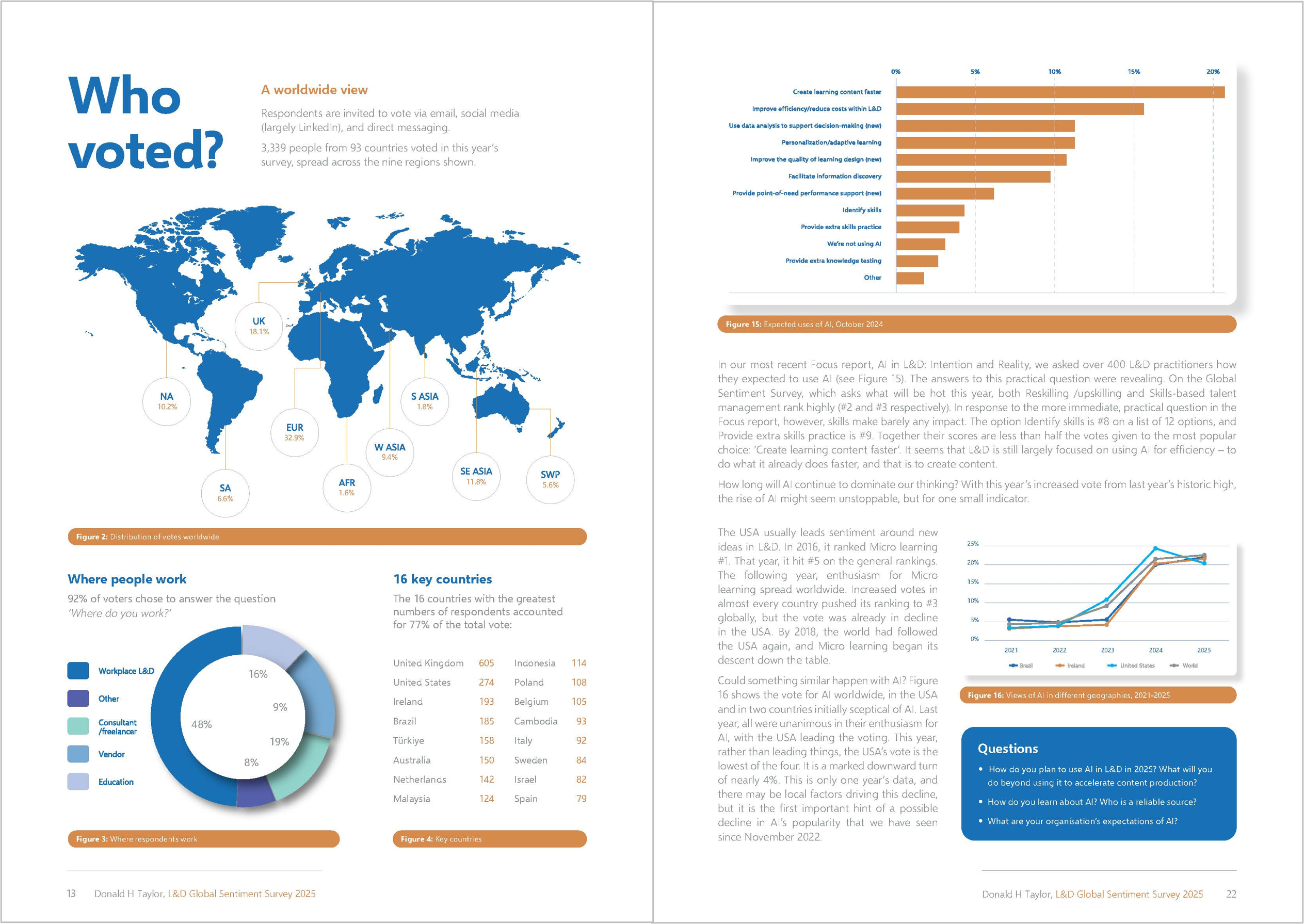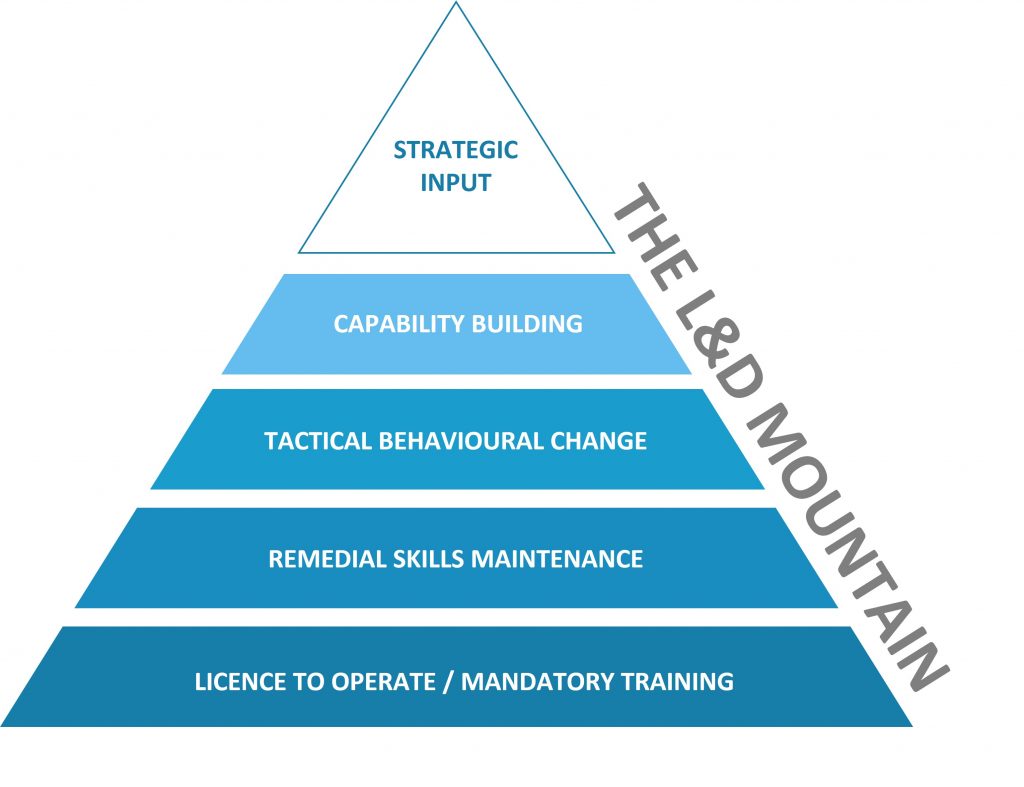Climbing the L&D mountain

Would you like to be more strategic in Learning and Development (L&D)? You’ll have a mountain to climb. And on the way, you’ll have to tackle two issues most people are unwilling to confront.
Training … it’s like school, isn’t it?
First, the obvious issue. L&D is not seen as strategic because … well, it’s training, right? And that’s just not strategic, is it? This attitude, unspoken, but widely shared, is a real blocker for anyone wanting the ear of people at the top.
Whatever executives may say about people being their most important asset, they typically see L&D as synonymous with transactional training, with ensuring people have the basics to do their current jobs well enough. It’s not associated with strategic thinking. The acid test: who does the board trust to facilitate workshops for the companies’ top level executives? Most likely an external – and very expensive – consultancy, not their own L&D team.
I believe this attitude stems from a widely-held habit of equating L&D to learning at school (the schoolroom assumption). With this comes the assumption that L&D’s sole focus should be designing and delivering courses. This assumption forms the mute backdrop to most conversations about learning in the workplace and must be confronted to gain any credibility with the organisation.
Good, but not enough
Suppose we confront that misconception, and prove that good L&D is about more than designing and delivering content. Is that enough to win us a seat at the top of the mountain, providing our strategic input?
No.
Good L&D, among other things, involves performance consulting, the smart use of data, the ability to support informal and social learning. These skills and this knowledge, however, while essential to running a good L&D department, do not prepare you for delivering strategic advice.
I’ll repeat that: what makes you good at L&D execution does not make you good at strategy.
To illustrate this, think of L&D as a mountain:
At the summit of the mountain is where L&D would like to be – offering strategic input to organisational leaders. At the bottom of the mountain lie the non-strategic, transactional activities that need doing every day.
The foothills of the mountain
The two bottom tiers focus on the ‘Now’ of operational viability: ‘Remedial skills maintenance’ (training people to do their current jobs) and ‘Licence to operate / mandatory training’ (meeting external criteria for the business remaining operational). Onboarding (helping people know how to work in the organisation) belongs here, too.
When the higher ups look at L&D this is what they see most of. And with good reason. If L&D does not keep the business legally compliant, and if people can’t do their jobs, then things grind to a halt. That matters deeply.
Too often compliance training in particular is seen as something boring but necessary, to be executed by L&D with as little effort as possible before getting on to the more exciting stuff higher up the mountain. That’s a mistake. Not only are these two layers crucial to the business, they are also L&D’s shop window, experienced by almost everyone in the organisation at some point.
These may only be the foothills of the L&D mountain, but if you don’t cross them well, forget your ideas about reaching the summit.
Approaching the summit
The next two layers are about building employees capability for the future. This can be in terms of upskilling them in their current roles – tactical behaviour change – or building a skills base for the future, working strategically to build capability that matches organisational plans.
Expressed like this, this last tier of Capability Building sounds like it should be a natural part of Strategic input. It isn’t. It is the output, the implementation, of a strategic discussion. You only know what capability to build after you have set the strategic vision for the organisation.
And this is why the top of the mountain is so very different from the rest. It involves a different set of skills to what is required to excel on the route to the mountain top.
Let’s be clear: however exciting the summit may be, you don’t reach it without good work at every stage on the way. However, scaling the first four tiers of the mountain do not, by themselves, equip you to work at the summit. In the words of Marshall Goldsmith: “What got you here won’t get you there”.
On a real mountain you begin at the foothills in boots, but once you hit the snow, you need a different set of equipment – at the very least, you’ll need crampons on your boots.
So it is with L&D. Knowing how to deliver a training programme is about excellent implementation, and you must do this well, consistently, to move up to delivering strategic input. But to talk about the future of the organisation, and the skills most needed to underpin it, there’s a whole lot more to know.
What, then, does L&D need to scale the summit? What are the equivalents of the crampons, ice axe, rope and oxygen that you need on this final tier? That’s something we’ll explore in a future blog.



